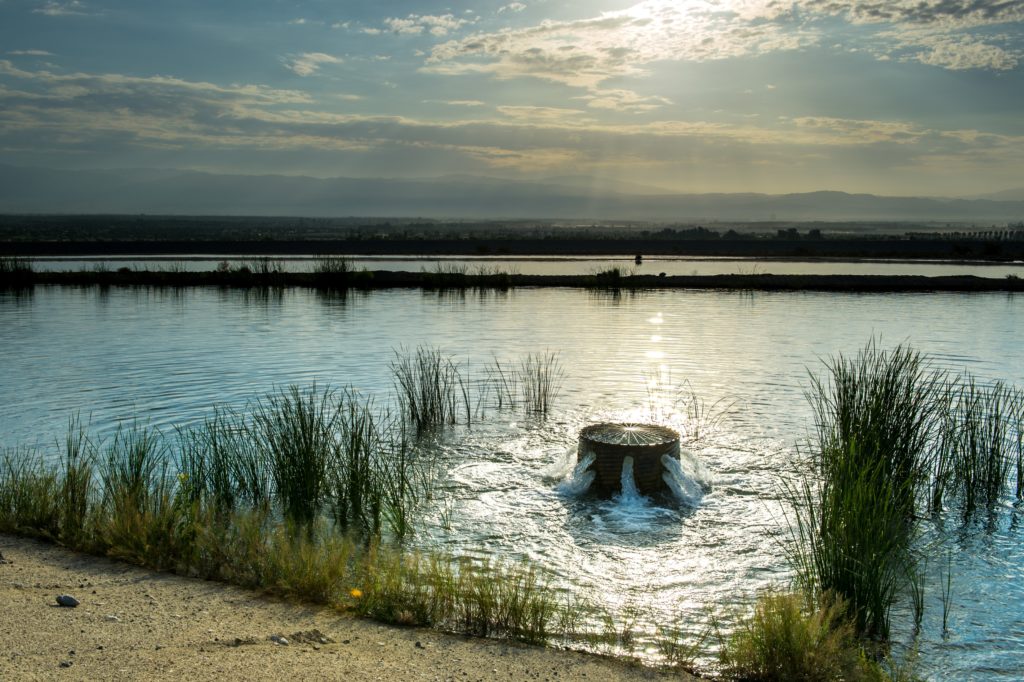
“Efforts to boost groundwater recharge are critical to making California’s limited, and increasingly volatile, water resources go further. Recharge is playing a growing role in maintaining groundwater as an effective drought reserve and in slowing or reversing the effects of years of unsustainable groundwater pumping.
But implementing recharge projects is not easy. Water managers face a range of hurdles. Even with the Sustainable Groundwater Management Act (SGMA) on the books, and the increasing availability of technical assistance, local decision makers are left mostly to their own ingenuity to figure out how to shore up groundwater resources to meet future needs.
Many Groundwater Sustainability Agencies (GSAs) expect recharge to help them meet their responsibilities under SGMA. But the details of how they will implement recharge projects are often unclear. … “
Click here to continue reading this article at Legal Planet.

“Groundwater recharge projects already play an important role in California. That role is about to expand rapidly, as local groundwater managers begin to take more concrete actions to meet their responsibilities under California’s landmark Sustainable Groundwater Management Act (SGMA).
As we mentioned in our last post, an important part of developing a successful recharge project is securing a source of water and the legal right to use it. In that post, we described the surface water right permit options administered by the State Water Resources Control Board (Water Board) that are potentially available for new groundwater recharge projects. We also mentioned the central role of permitting, and water rights oversight more broadly, in ensuring that water diversion and use doesn’t harm other water users or uses.
But is a water right always necessary? Below we explore when a recharge project might not need a water right at all (short answer: it’s complicated…and more than a little unclear)—and why it matters. … “
Click here to continue reading from Legal Planet.
Kathleen Miller writes,
“Implementation of the Sustainable Groundwater Management Act (SGMA) was always going to be tricky. Part of the necessary growing pains of SGMA is determining how the revolutionary statute interacts with traditional tenets of water law. As with any other sweeping legislative change, SGMA does not provide direct answers for every practical question which arises as the law is put into place.
Take SGMA’s so called “six deadly sins” – the undesirable results that newly formed groundwater sustainability agencies (GSAs) are tasked with avoiding, running the gamut from seawater intrusion to subsidence. One of the ways to combat undesirable results is to implement a more robust groundwater recharge program – diverting high surface water flows during wet years (as we just experienced) to aquifers. In fact, we’ve begun to see innovative projects, such as Recharge Net Metering andFlood-MAR, sprout up in the wake of SGMA to do exactly that. But how do we get water for those projects in the first place? … ”
Read more from the Legal Planet blog here: Groundwater recharge in the SGMA era
Dave Owen and Michael Kiparsky write,
“One of the many noteworthy features of California’s Sustainable Groundwater Management Act (SGMA) is that it requires local government agencies to consider and address the effects of groundwater management upon interconnected surface water. That requirement is an important step towards rationalizing California water management, which has long treated groundwater and surface water as separate resources.
The requirement also is part of a larger story about evolving science and policy in a changing world. … ”
Read more from the Legal Planet here: California groundwater management, science-policy interfaces, and the legacies of artificial legal distinctions
“One of the many noteworthy features of California’s Sustainable Groundwater Management Act (SGMA) is that it requires local government agencies to consider and address the effects of groundwater management upon interconnected surface water.
That requirement is an important step towards rationalizing California water management, which has long treated groundwater and surface water as separate resources. The requirement also is part of a larger story about evolving science and policy in a changing world. … “
Continue reading at the Legal Planet Blog here: California groundwater management, science-policy interfaces, and the legacies of artificial legal distinctions
Richard Frank writes,
“The California Court of Appeal for the Third Appellate District has issued an important decision declaring that California’s powerful public trust doctrine applies to at least some of the state’s overtaxed groundwater resources. The court’s opinion also rejects the argument that California’s Sustainable Groundwater Management Act (SGMA) displaces the public trust doctrine’s applicability to groundwater resources.
The Court of Appeal’s opinion in Environmental Law Foundation v. State Water Resources Control Board decides two key issues of first impression for California water law: first, whether the public trust doctrine applies to California’s groundwater resources; and, second, if it does, if application of that doctrine has been displaced and superseded by the California Legislature’s 2014 enactment of SGMA. A unanimous appellate panel answered the first question in the affirmative, the second in the negative. … “
Read more from the Legal Planet here: California Court Finds Public Trust Doctrine Applies to State Groundwater Resources


